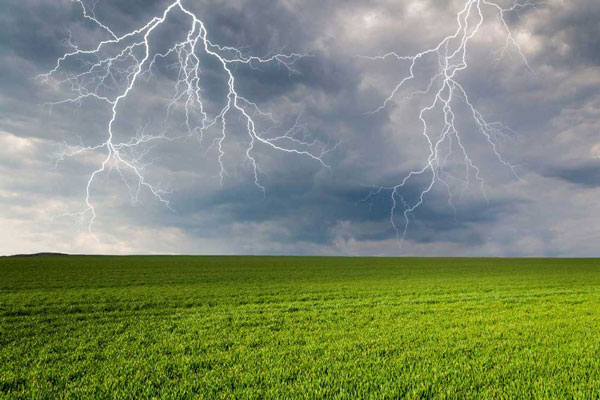Like most gardeners, I’m a big fan of rain. But until I read a short article in the Ann Arbor News recently, I had no idea that lightning itself is also good for my garden.

“Lightning is nature’s greatest fertilizer,” writes meteorologist Mark Torregrossa. “The air around us is 78% nitrogen. Nitrogen is the main nutrient in most fertilizers. But the nitrogen in the air is not usable by plants, until lightning strikes through it.
“Once the air is heated by lightning, two [atoms] of nitrogen are split apart. The single [atom] of nitrogen then joins with oxygen or hydrogen and is rained into the soil. Now it’s usable by plants. A lightning storm applies more nitrogen on lawns and crops than we could ever afford to buy.”
With Google’s help, I learned that lightning can briefly heat the air it passes through to 50,000 degrees F, almost ten times hotter than the surface of the sun. That enormous energy breaks up the nitrogen (N2), freeing the atoms to recombine into nitrate (NO3), ammonia (NH3), and ammonium (NH4). The latter two are also produced by nitrogen-fixing bacteria in the roots of the enormous Fabacaea or legume family, but some scientists believe that lightning is responsible for as much as 50% of the nitrogen available to plants.











